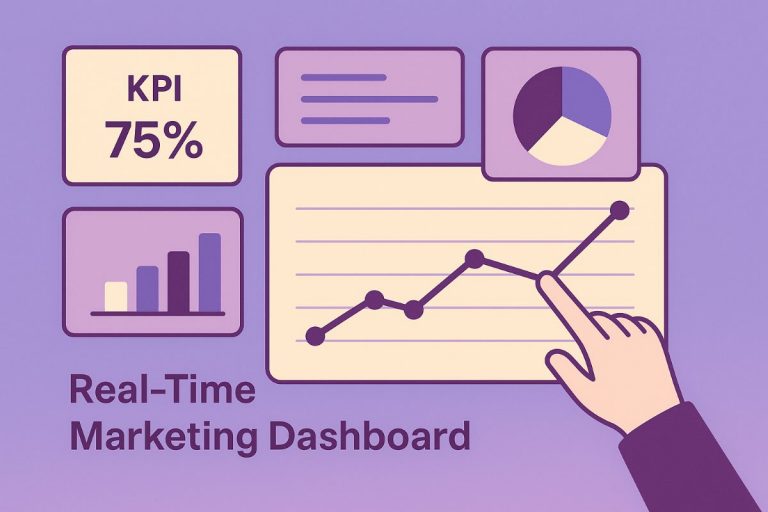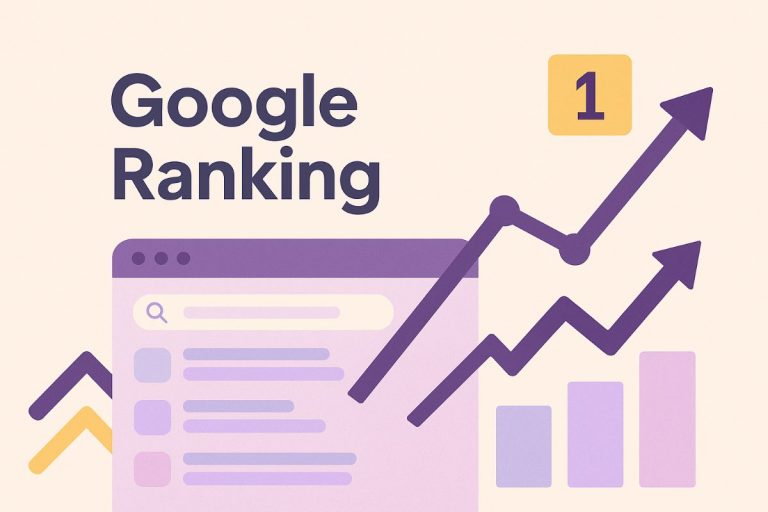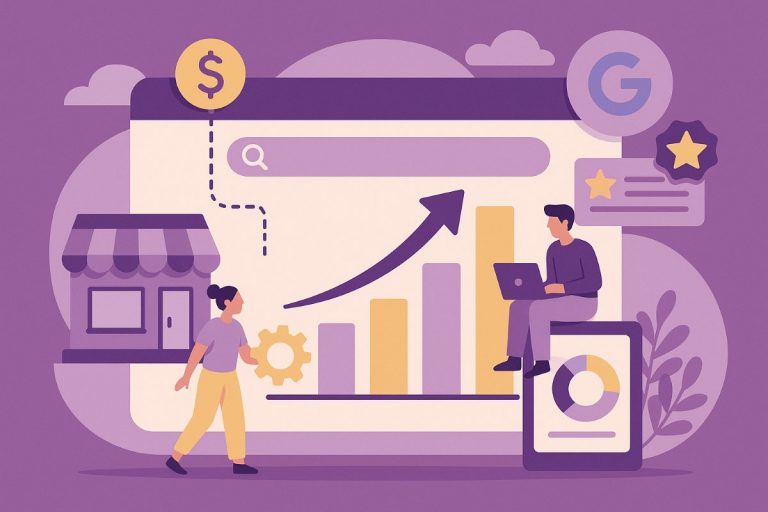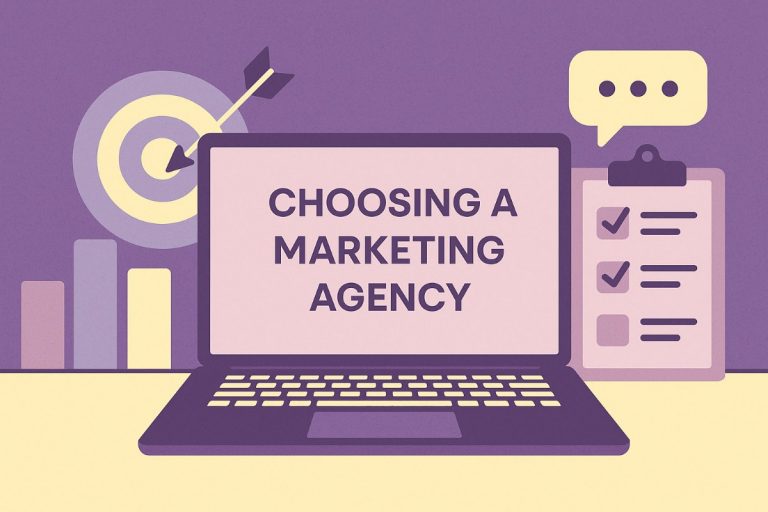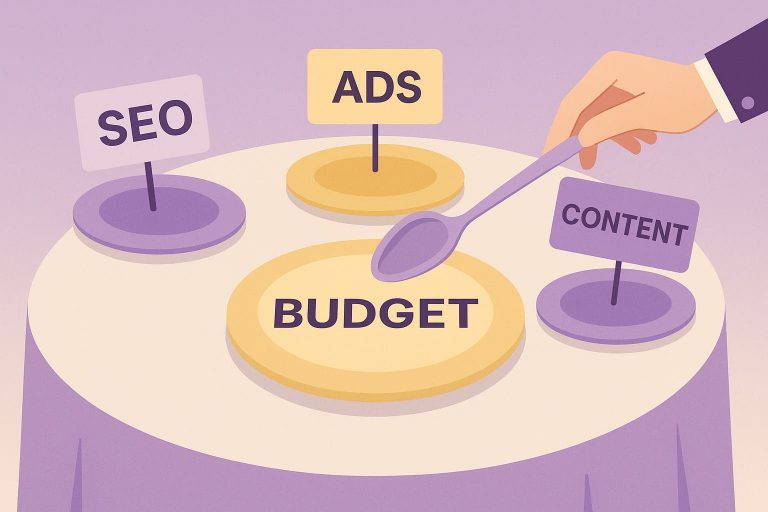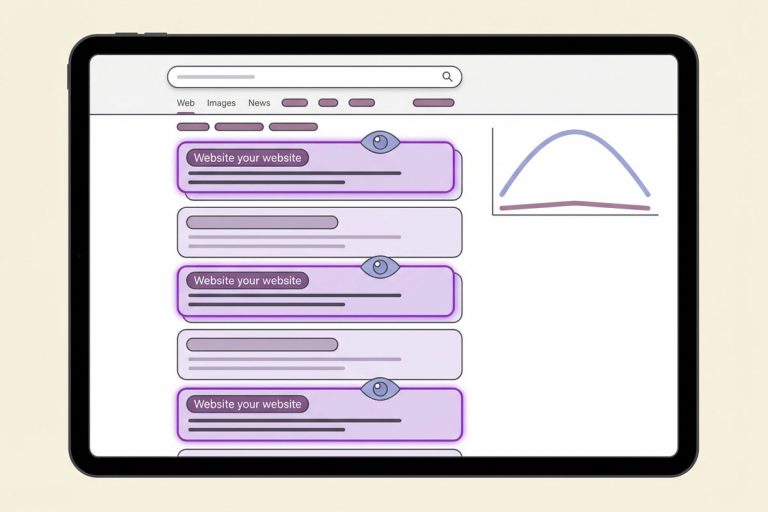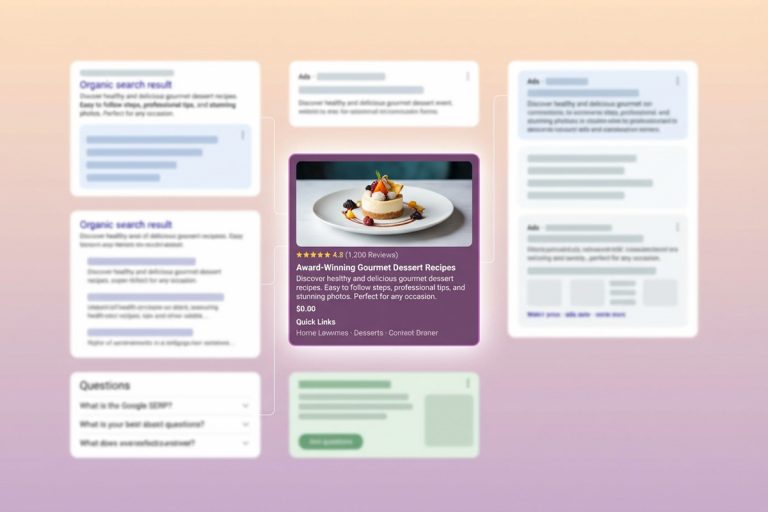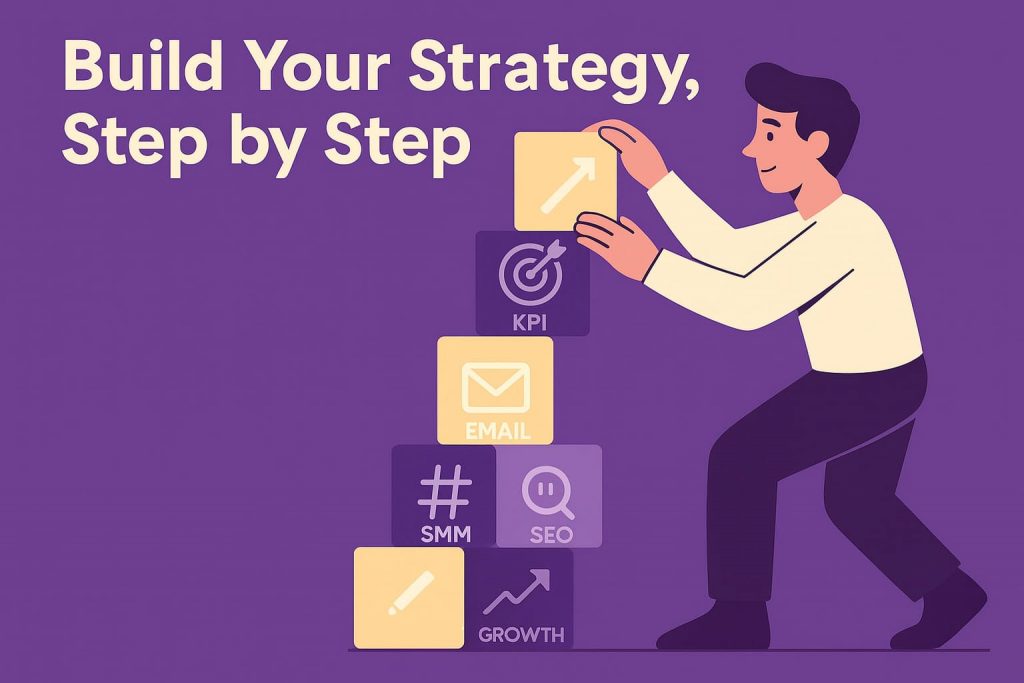
- Understanding What Makes a Marketing Strategy Successful
- The Core Components Every Effective Marketing Strategy Needs
- Types of Marketing Approaches
- 10 Marketing Strategy Examples That Delivered Exceptional Results
- How to Create a Marketing Strategy for Your Business
- Marketing Strategy Frameworks and Models
- Measuring and Optimizing Your Marketing Strategy
- Common Marketing Strategy Pitfalls and How to Avoid Them
- Taking Your Marketing Strategy to the Next Level
- Creating Your Own Marketing Strategy Success Story
You’ve seen those jaw-dropping case studies where brands like Spotify and Patagonia completely transform their market position. Here’s what they don’t tell you: these marketing strategy examples aren’t flukes – they follow repeatable patterns you can steal. After analyzing hundreds of campaigns that generated measurable ROI across B2B tech, retail, and healthcare, these battle-tested approaches delivered everything from 67% lead increases to $2M pipeline growth.
Understanding What Makes a Marketing Strategy Successful
A marketing strategy isn’t your Instagram posts or email campaigns – it’s the master blueprint that determines which battles you fight and why. Think of it as your GPS coordinates before you even turn on the engine.
Your marketing effectiveness depends entirely on this planning phase, where you map out positioning, define SMART goals, and align every future action with measurable business outcomes. Too many companies jump straight to tactics (“We need TikTok!”) without first answering the strategic questions that matter.
| Aspect | Marketing Strategy | Marketing Tactics |
|---|---|---|
| Definition | A long-term plan designed to achieve overall marketing goals | Specific actions and steps taken to implement the strategy |
| Focus | Focuses on broad, overarching goals and vision | Focuses on specific, short-term activities |
| Timeframe | Long-term (months to years) | Short-term (days to months) |
| Scope | General direction, such as market positioning, targeting, and branding | Specific campaigns, promotions, content, or channels |
| Goal | To define what the brand wants to achieve | To execute actions that help accomplish the strategy |
| Nature | High-level and abstract | Concrete, measurable actions |
| Examples | Market segmentation, brand positioning, value proposition | Social media campaigns, email marketing, discounts |
| Measurement | Success is measured by long-term growth and brand recognition | Success is measured by immediate performance (sales, engagement) |
| Flexibility | Less flexible, as it’s based on long-term objectives | Highly flexible, can be adjusted quickly based on results |
The Core Components Every Effective Marketing Strategy Needs
When developing a marketing strategy, you need crystal-clear SMART goals (not “increase awareness”), a forensically detailed target audience profile (beyond “millennials with disposable income”), and a value proposition that makes competitors irrelevant. Add to that a brutally honest SWOT analysis and a measurement framework that tracks what matters – these components interconnect like gears in a Swiss watch. Miss one, and the whole machine grinds to a halt.
Your value proposition isn’t what you think makes you special; it’s what your target audience desperately needs that only you deliver. Marketing effectiveness depends on these components working in harmony – your SWOT analysis informs positioning, which shapes your value proposition, which determines channel selection, all measured against those SMART goals you set at the beginning.
Types of Marketing Approaches
Traditional marketing still pulls weight (a well-placed billboard drove 40% of a client’s walk-in traffic), while digital dominates measurability and targeting.
But here’s what nobody tells you: the most successful brands run omnichannel symphonies where your radio spot drives podcast listens, your Instagram feeds retail displays, and your branding stays consistent whether someone encounters you on LinkedIn or a highway billboard.
The evolution from traditional to digital wasn’t replacement – it was multiplication. Smart marketers leverage each approach’s superpower: traditional marketing’s mass awareness muscle, digital’s surgical precision, inbound’s trust-building magnetism, and outbound’s immediate impact. The magic happens when these types of marketing strategies amplify each other rather than compete for budget.
| Approach | Strengths | Weaknesses | Best For |
|---|---|---|---|
| Traditional Marketing | Mass reach, credibility, tangible presence | High cost, difficult measurement | Brand awareness, local businesses |
| Digital Marketing | Precise targeting, real-time data, cost-efficient | Ad fatigue, privacy concerns | Lead generation, e-commerce |
| Integrated Marketing | Consistent messaging, multi-touchpoint impact | Complex coordination, higher investment | Established brands, product launches |
Traditional Marketing Approaches
Don’t believe the “print is dead” hysteria – traditional marketing strategies still dominate certain sectors. A luxury jewelry client doubled down on magazines while competitors fled to Instagram, capturing 62% of their sales from print advertisements in upscale publications. Why? Their 45+ demographic trusts the tangibility of newspapers and television over algorithmic feeds. Radio commercials drive immediate action (law firms see 30% of calls within an hour of broadcast media spots), while billboards create unavoidable brand impressions that digital can’t replicate.
Traditional Marketing Channels & Current Effectiveness:
- Television – Premium positioning for mass awareness campaigns.
- Print Advertising – Trust-building for professional services and luxury goods.
- Radio Commercials – Immediate response driver for local businesses.
- Billboards/Signage – Location-based targeting with 24/7 visibility.
- Direct Mail – Highest response rates for neighborhood businesses (5-9% versus 0.6% for email).
Digital Marketing Approaches
Digital marketing has completely reshaped the way we measure success, making it easier and more exciting to track progress. Imagine a world where every customer interaction is trackable, giving you real-time insights into what’s working and what’s not.
The precision is nothing short of addictive: SEO can fuel a massive chunk of your website traffic without spending a dime, email marketing can turn every dollar into a solid return, and paid ads allow you to hit pause on underperforming campaigns in a flash.
And the best part? Content marketing has become a powerhouse. By tapping into the wealth of data available, businesses can transform their content into lead-generating machines.
10 Marketing Strategy Examples That Delivered Exceptional Results
Time to dissect the marketing strategies examples that actually moved the needle – these aren’t hypothetical frameworks but real campaigns with measurable outcomes. From a bootstrapped startup that went from zero to $10M using guerrilla content tactics to an established B2B company that doubled market share through strategic repositioning, these examples of marketing strategies showcase different approaches in action.
Content-Driven Marketing Strategy Examples
Let’s dissect three content marketing strategy examples that prove content isn’t just king – it’s the entire kingdom. These online marketing strategies showcase how inbound methodologies transform browsers into buyers without the hard sell. Each example demonstrates how strategic content creation, paired with ruthless SEO optimization, generates compound returns that paid advertising can’t touch.
Example 1: The B2B Tech Company’s 67% Lead Surge
A cybersecurity startup was burning $30K a month on Google Ads with little to show for it. So, they flipped the script and launched a game-changing report, “The Real Cost of Data Breaches for SMBs“, backed by original research from 500 companies.
The strategy? Pair the report with a four-part webinar series, each digging into specific vulnerabilities. Content was gated progressively, starting with a free webinar and locking the rest behind company details.
The result was a 67% surge in qualified leads in just 90 days, and the cost per lead dropped from $312 to $47. The big lesson? Original research isn’t just informative – it’s a lead-generating powerhouse when you solve real problems first.
Example 2: HubSpot’s Power of Educational Content
In 2016, HubSpot’s blog was publishing hundreds of posts but wasn’t seeing the expected growth in search traffic. They switched to a topic cluster strategy, creating a central “pillar” page with related “cluster” pages that linked back to it. By optimizing content for SEO and addressing their audience’s needs, they created smarter, interconnected content that Google could easily rank.
The result? HubSpot’s traffic soared from 5,000 to over 300,000 monthly visits in three years, with clients seeing a 20% to 60% increase in organic traffic after Google’s 2018 algorithm update. The takeaway? Organizing and optimizing content boosts SEO, builds authority, and drives long-term success.
Example 3: Red Bull’s Media Empire
Red Bull has transformed from an energy drink brand into a global media powerhouse with Red Bull Media House. Instead of focusing on traditional ads, they produce high-energy content around extreme sports, music, and adventure, deeply resonating with their audience.
The strategy? Red Bull uses multiple platforms like Red Bull TV, ServusTV, and The Red Bulletin to create content that rarely mentions their product, but showcases their brand’s lifestyle.
The results? Red Bull’s YouTube channel has over 24.8 million subscribers, becoming one of the most-watched brand channels globally. This approach has built a media empire that drives deep brand engagement and creates a lifestyle experience for their audience. The key takeaway? Content that reflects your brand’s values connects with your audience on a much deeper level than traditional advertising.
Social Media Marketing Strategy Examples That Generated Real ROI
These social media marketing examples prove that ROI isn’t a unicorn – it’s a formula. Forget vanity metrics; these online marketing strategies turned double-taps into dollars by treating social media as a conversion engine, not a popularity contest. Each campaign demonstrates how precise targeting, strategic content, and obsessive measurement transform Facebook, LinkedIn, and Instagram from time-sucks into revenue generators.
Example 1: Hydrate Medical’s 1,039% ROI via Social Media
Hydrate Medical, an IV hydration clinic, was struggling to boost its visibility and demand. In October 2020, they partnered with Social Ape Marketing to revamp their marketing approach. By leveraging targeted social media ads and Google campaigns, they generated over 1 million impressions, reaching nearly 292,000 people by July 2022. This shift resulted in a threefold increase in sales over two years, delivering an impressive ROI of 1,039%. The takeaway? Social media ads, when paired with the right strategy, can drastically increase visibility and drive sales growth.
Example 2: Prime’s Viral Growth with Influencer Marketing
Prime, the sports drink co-founded by Logan Paul and KSI, made waves in the beverage market by utilizing their massive social media influence. Instead of traditional advertising, they focused on viral content and strategic influencer partnerships. In its first fiscal year, Prime achieved $250 million in retail sales, becoming the second-largest brand in the hydration market, right behind Gatorade. The result? A viral social media campaign that propelled Prime to stardom. The key lesson? Leveraging the power of influencers and viral marketing can catapult a brand into industry leadership.
Example 3: Galaxy Theatres’ 72% Increase in Ticket Sales
Galaxy Theatres teamed up with Bright Age to overhaul their social media strategy. By combining paid and organic campaigns, they saw a 72% increase in ticket sales, alongside a 200% growth in Instagram followers. Their likes surged by nearly 400%, demonstrating the tremendous impact of a cohesive, well-executed social media strategy. The lesson here? A balanced mix of paid and organic content can lead to massive engagement and sales growth when aligned with brand goals.
| Strategy | Goals | Platforms | Content Types | Key Metrics | Results |
|---|---|---|---|---|---|
| Hydrate Medical's 1,039% ROI | Increase visibility and sales | Social Media Ads, Google Ads | Targeted ads, Video reports, Google campaigns | 1 million impressions, 292,000 people reached, 3x sales increase | 1,039% ROI, Threefold increase in sales |
| Prime's Viral Growth | Leverage influencer marketing for viral growth | Social Media (mainly Instagram, YouTube) | Viral content, Influencer partnerships, Social media posts | Viral engagement, $250M in retail sales, second-largest hydration brand | Became second-largest hydration brand, $250M in sales |
| Galaxy Theatres' 72% Sales Increase | Boost ticket sales and social media engagement | Instagram, Facebook (Paid and Organic) | Paid campaigns, Organic content, Instagram posts | 72% increase in ticket sales, 200% increase in Instagram followers | 400% increase in likes, 72% sales boost |
Customer-Centric Marketing Strategy Examples
Customer-centric marketing isn’t about what you want to sell – it’s about what customers desperately need to buy. These personalization marketing examples demonstrate how obsessing over the customer journey transforms one-time transactions into lifetime relationships. The shift from broadcast to conversation, from segments to individuals, from assumptions to data-driven personalization – these innovative marketing strategies prove that treating customers like humans with unique needs isn’t just nice, it’s profitable.
Example 1: Marriott’s AI-Driven Personalization Elevates Guest Experience
Marriott took a bold step in 2020 to transform guest experiences by harnessing the power of artificial intelligence. With their Bonvoy loyalty program, they began delivering hyper-personalized offers based on individual guest preferences and past interactions. The results were impressive: a 12% increase in guest satisfaction scores and a 20% boost in repeat bookings. Hotels using AI saw a 30% jump in customer satisfaction! The takeaway? When you use AI to make customers feel valued and understood, loyalty skyrockets – and so does your revenue.
Example 2: Chipotle’s Digital Personalization Revolution
Chipotle was already a fan favorite, but they didn’t stop there – they took their customer experience to the next level. By embracing Adobe’s tools, they began tailoring digital experiences to individual customer preferences. The results? Over 38 million members now belong to the Chipotle Rewards program, driving repeat visits and sales growth. By delivering personalized promotions, Chipotle not only kept their customers coming back but also strengthened their position in a competitive market. The lesson? When you put personalization at the center, customers don’t just return – they bring their friends along too.
Example 3: Starbucks’ Mobile Mastery for Unmatched Engagement
Starbucks has long been a digital marketing leader, but they’ve only gotten better at keeping customers engaged through their app. By offering personalized rewards, tailored promotions, and a seamless mobile experience, Starbucks encouraged customers to visit more often and spend more per trip. Users of the Starbucks app spend over 30% more than non-users, and the brand saw a surge in customer engagement across all touchpoints. The key takeaway? Personalizing through mobile apps isn’t just convenient for customers – it creates a deeper bond and boosts your bottom line.
Example 4: Amazon’s Game-Changing Product Recommendations
Amazon has revolutionized the shopping experience, and much of that success comes from their personalized recommendations. By tracking and analyzing customer behavior, Amazon offers tailored product suggestions that feel almost eerily spot-on. These recommendations are responsible for 35% of Amazon’s total sales, proving just how effective personalization can be in driving purchases. The insight? When you anticipate your customers’ needs before they even realize them, you turn casual browsers into loyal buyers, driving massive revenue growth in the process.
How to Create a Marketing Strategy for Your Business
Developing a marketing strategy doesn’t require an MBA or million-dollar budget – just a proven framework that transforms chaos into clarity. The same 7-step business marketing strategy development process that Fortune 500 companies use to dominate markets works equally well for startups operating from garage offices. This methodology strips away guesswork from planning and budgeting, replacing assumptions with actionable intelligence that drives measurable growth.
The 7-Step Marketing Strategy Development Process:
- Analyze competitors, industry trends, and customer needs.
- Identify and profile your ideal customer segments.
- Determine your unique value proposition and differentiation.
- Choose marketing channels based on audience behavior.
- Distribute resources based on expected ROI per channel.
- Create detailed timelines and assign responsibilities.
- Establish KPIs and feedback loops for optimization.
Conducting Effective Market Research
The most valuable insights emerge from three critical questions every customer interview should explore: “What job are you hiring this product to do?” (not what features do you want), “Tell me about the last time you solved this problem” (not would you buy this), and “What’s the most frustrating part of your current solution?” (not what would you improve).
The breakthrough moments in market research come from triangulating data sources – when customer interviews, competitor analysis, and behavioral analytics all point to the same hidden opportunity. Smart marketers look for the “dog that didn’t bark” – the features competitors aren’t advertising, the keywords they’re not bidding on, the customer segments they’re ignoring.
Essential Market Research Tools & Resources:
- SEMrush/Ahrefs – Competitor keyword analysis and backlink research.
- Google Analytics – Website visitor behavior and conversion paths.
- Brandwatch/Hootsuite – Social media listening and sentiment analysis.
- Hotjar/FullStory – User session recordings and heatmap analytics.
- SurveyMonkey/Typeform – Customer survey creation and analysis.
- Reddit/Quora – Unfiltered customer discussions and pain points.
- G2/Capterra Reviews – Competitor strengths and weaknesses analysis.
At Lead Craft, we dive deep into the heart of your market, analyzing your niche, competitor content, and the SEO landscape with precision. This comprehensive approach allows us to design a custom-tailored SEO strategy that not only aligns with your business objectives but drives real, measurable results. With our expert guidance, you’ll soar to the top of search rankings, becoming the go-to brand for your ideal audience. Through targeted optimization, we’ll ensure your content will connect, engage, and convert, boosting your visibility and attracting the right customers every step of the way.
Defining Your Target Audience with Precision
Target audience definition transcends the lazy demographics trap that kills most marketing strategies. Age, income, and location tell you nothing about why someone buys – it’s the psychographics that reveal purchase triggers. The most effective buyer personas capture the 3 AM worries, the status games they’re playing, and the transformation they’re secretly seeking.
Customer journey mapping uncovers behavioral patterns that demographics completely miss. Track not just what channels prospects use, but when they switch between them, what content they consume before converting, and which objections cause them to ghost. Advanced segmentation reveals micro-moments of decision – that CFOs research solutions on mobile during commutes but only purchase from desktop after 7 PM, or that B2B buyers consume 13 pieces of content before reaching out but only remember the last three.
Marketing Strategy Frameworks and Models
The 4P marketing mix remains the Swiss Army knife of marketing planning – not because it’s outdated, but because it forces uncomfortable questions most strategies skip. Product isn’t just what you sell; it’s the transformation customers buy. Price transcends cost-plus calculations to become a positioning statement. Place extends beyond distribution channels to encompass every customer touchpoint. Promotion moves past broadcasting features to orchestrating conversations.
SWOT analysis becomes transformative when you stop listing obvious observations and start uncovering hidden leverage points. The marketing funnel framework maps this customer journey from awareness through advocacy, identifying friction points competitors ignore. Strategic frameworks aren’t academic exercises – they’re diagnostic tools that expose million-dollar blindspots.
Measuring and Optimizing Your Marketing Strategy
Let’s be honest: you can’t improve what you don’t measure. The sweet spot for marketing strategy measurement sits between tracking nothing and drowning in vanity metrics. Think of your analytics as a dashboard, not a data dump. You need KPIs that tell you whether you’re actually driving ROI.
Must-Track Metrics for Any Marketing Strategy:
- Conversion rate by channel
- Customer acquisition cost vs. lifetime value ratio
- Marketing qualified lead velocity
- Attribution by touchpoint
- Return on ad spend by campaign
- Content engagement to conversion rate
- Brand search volume trends
Common Marketing Strategy Pitfalls and How to Avoid Them
Here’s what hundreds of failed campaigns have in common: they mistake activity for strategy. The most devastating marketing mistakes don’t announce themselves with fanfare – they creep in disguised as “best practices.” These strategy challenges multiply when teams confuse correlation with causation or keep throwing good money after bad because nobody wants to admit the strategy isn’t working.
Warning Signs Your Marketing Strategy Is Heading Off Course:
- Your team spends more time in meetings about strategy than executing it.
- Budget allocation hasn’t changed despite performance data showing clear winners and losers.
- You’re adding new channels faster than you’re mastering existing ones.
- Customer feedback consistently contradicts your positioning assumptions.
- The same campaigns run quarter after quarter with declining returns.
- Success metrics keep changing to make results look better.
- Competitors with smaller budgets are capturing more market share.
Taking Your Marketing Strategy to the Next Level
The best marketing strategy isn’t about replacing the fundamentals – it’s about smartly enhancing them. Top performers aren’t chasing every new tactic but layering innovation onto proven frameworks. AI-driven personalization, for example, boosts email conversions from 2% to 12%, but only when paired with strong segmentation and engaging copy.
The future of digital marketing isn’t choosing between creativity and efficiency – it’s about blending both. With cross-channel integration and unified data platforms, your TikTok campaign can fuel email sequences, trigger personalized website experiences, and be analyzed with predictive analytics to forecast future outcomes.
Emerging Marketing Trends Worth Exploring:
- AI-driven dynamic pricing and offer optimization (seeing 25-35% revenue lifts)
- Zero-party data strategies replacing third-party cookies
- Community-led growth reducing CAC by 60-70%
- Voice and conversational commerce integration
- Predictive lead scoring using behavioral signals
- Micro-moment marketing with real-time personalization
- Privacy-first marketing architectures
Integrating New Technologies into Your Marketing Strategy
Successful marketing technology integration starts with a simple framework: identify the friction point, quantify its impact, then evaluate whether automation or innovation actually solves it better than optimizing your current process. Marketing automation sequences showcase this reality – companies seeing 200% improvements in lead nurturing aren’t the ones with the most complex workflows; they’re the ones who mapped actual customer behavior before building anything.
| Marketing Technology | Best Use Cases | Typical Implementation Timeline |
|---|---|---|
| Marketing Automation | Lead nurturing, email campaigns, customer segmentation | 3-6 months for full implementation |
| Customer Relationship Management (CRM) | Managing customer interactions, sales tracking, personalized communication | 4-9 months for integration and training |
| AI-Powered Personalization | Personalized email content, dynamic website experiences, product recommendations | 6-12 months for AI model training and setup |
| Social Media Management Tools | Scheduling posts, analyzing engagement, cross-platform campaigns | 1-2 months for setup and optimization |
| Predictive Analytics | Forecasting customer behavior, sales trends, churn prediction | 3-6 months for data collection and modeling |
| Cross-Channel Integration Platforms | Syncing campaigns across email, social, web, and mobile platforms | 6-12 months for full integration and optimization |
Creating Your Own Marketing Strategy Success Story
Your marketing strategy should be unique – and that’s the goal. The frameworks and metrics outlined here are the foundation, but the key is adapting them to your market. Start with the challenge that keeps you up at night: drowning in data but lacking insights? Begin with measurement optimization. Losing to competitors with bigger budgets? Focus on positioning.
Success doesn’t come from perfection – it comes from choosing one area, setting baselines, and iterating based on data. Each optimization, metric, and refinement brings you closer to growth. Those small improvements compound into big wins: a 2% increase in conversions can mean thousands in revenue. And each insight, even from failures, moves you closer to a winning strategy.














 452
452  6 min
6 min




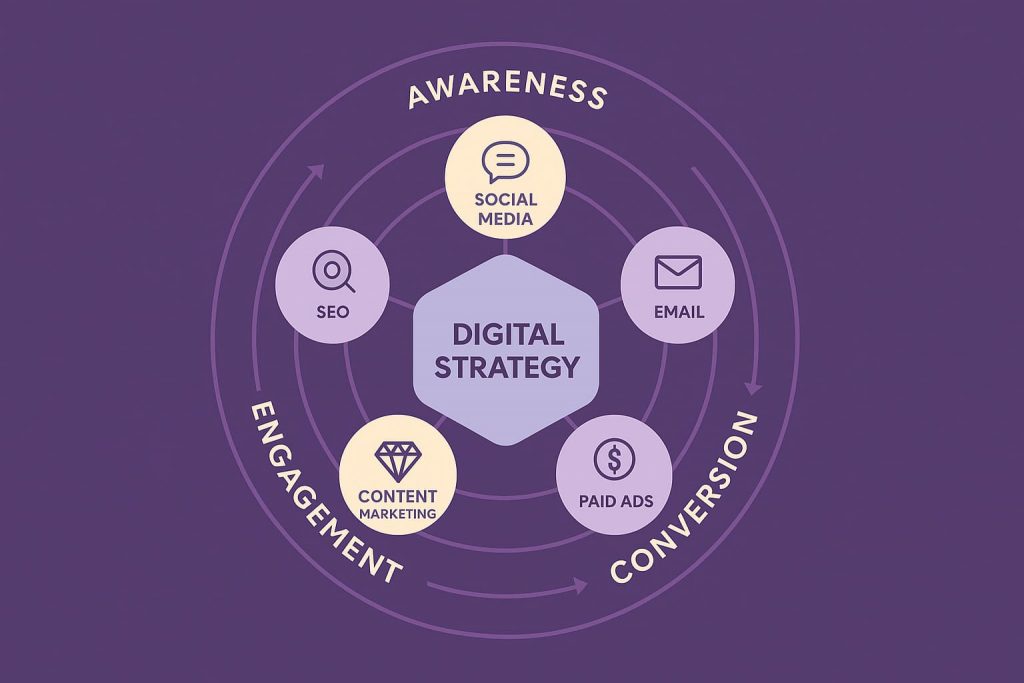
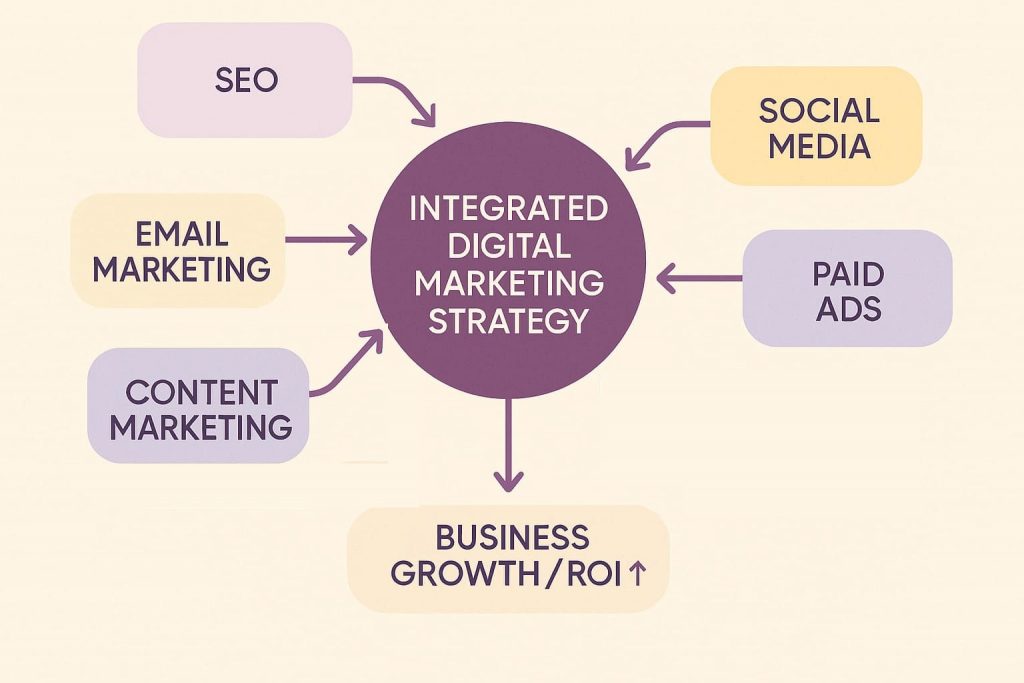
 Share
Share
 X
X
 LinkedIn
LinkedIn





